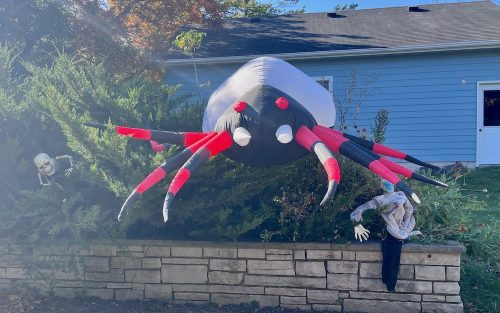We just tossed up one giant spider, a couple of smaller spiders, and the dessicated, skeletal corpse of a scientist next to our driveway. Preparations complete. We also have a bag of 200 pieces of candy waiting to be devoured by someone other than ourselves.
It’s not much, but it’s something.



What is the genus of an empiricist-eating floatspider?
Profophagus
Australia has in recent years beensadly infected with the Halloween insaniity.
Great spider but you might want to rethink the position of the human’s left hand.
Neighbors have a motion activated spider, about 2′ across, that lunges toward the sidewalk when anyone walks by. I don’t recommend it, as a major side effect is making many passing dogs bark.
Heh. It always amused me that Halloween used to be a day of dread in most cultures, until the USAnians got on to it.
Now it’s all fun and games, but back in the day, it was gothic dread.
No cutesy kiddies gamboling along.
I remember reading this at school: https://ciudadseva.com/texto/el-monte-de-las-animas/
(7 de noviembre de 1861, Gustavo Adolfo Bécquer)
Huh. Whaddayano. Serendip is not that far.
https://news.mcmaster.ca/from-harvest-to-horror-the-roots-of-halloween/
↓
From harvest to horror: The roots of Halloween
History professor Megan Armstrong on how Halloween has evolved from a celebration steeped in ritual, community and the supernatural, to a playful night of fright.
By Andrea Lawson October 24, 2025
@ 6 Morales
Heh, indeed.
https://en.wikipedia.org/wiki/Halloween#Trick-or-treating_and_guising
But please, tell us more, O wise historian.